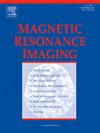动态增强磁共振成像预测高级别胶质瘤中不可测量疾病的进展
IF 2
4区 医学
Q2 RADIOLOGY, NUCLEAR MEDICINE & MEDICAL IMAGING
引用次数: 0
摘要
目的探讨动态对比增强(DCE) MR成像的直方图模型在预测高级别胶质瘤(HGG)患者放化疗后持续存在的增强性不可测量疾病(NMD)进展方面的潜力。材料与方法共97例胶质瘤患者(平均年龄±标准差,46.7岁±12.1岁;73名接受替莫唑胺放化疗的男性患者在全切除后进行回顾性研究,其中进展组55名(57%),非进展组42名(43%)。提取两组增强NMDs的Ktrans(血浆与血管外细胞间隙间的体积传递常数)和Ve(血管外体积)的直方图特征并进行比较。在二元逻辑回归中纳入具有显著差异的直方图特征,以构建预测2至3个月内病情进展的模型。分别基于Ktrans和Ve单独或联合构建模型。采用受试者工作特征曲线评价不同模型的预测性能。这些模型在一个由15名HGG患者组成的前瞻性队列中得到证实。结果Ktrans直方图模型预测进展的曲线下面积(AUC)为0.900。模型的AUC为0.879。结合Ktrans和Ve,模型的AUC为0.927。这些模型在前瞻性研究中表现出良好的预测性能。结论基于DCE MRI的直方图模型可提前2 ~ 3个月预测放化疗后HGG增强nmd的进展。本文章由计算机程序翻译,如有差异,请以英文原文为准。
Predicting progression of enhancing non-measurable disease in high-grade glioma by using dynamic contrast-enhanced MR imaging
Objectives
To investigate the potential of histogram models derived from dynamic contrast-enhanced (DCE) MR imaging in predicting the progression of enhancing non-measurable disease (NMD) persisting after chemoradiotherapy in patients with high-grade glioma (HGG).
Materials and methods
A total of 97 glioma patients (mean age ± standard deviation, 46.7 years ±12.1; 73 men) who underwent temozolomide-based chemoradiation following gross total resection were enrolled retrospectively, including 55 (57 %) in the progression group and 42 (43 %) in the non-progression group. The histogram features of Ktrans (volume transfer constant between the plasma and extravascular extracellular space) and Ve (extravascular volume) for enhancing NMDs were extracted and compared between the two groups. Histogram features with significant differences were included in binary logistic regression to construct models to predict progression within 2 to 3 months. The models were constructed based on Ktrans and Ve alone or combined. Receiver operating characteristic curves were used to evaluate the prediction performance of the different models. The models were testified in a prospective cohort consisting of 15 patients with HGG.
Results
The histogram model of Ktrans showed an area under the curve (AUC) of 0.900 in predicting progression. The model of Ve had an AUC of 0.879. When combining Ktrans and Ve, the model achieved an AUC of 0.927. These models showed excellent predictive performance in the prospective study.
Conclusion
The histogram models based on DCE MRI can predict the progression of enhancing NMDs in HGG following chemoradiotherapy 2 to 3 months in advance.
求助全文
通过发布文献求助,成功后即可免费获取论文全文。
去求助
来源期刊

Magnetic resonance imaging
医学-核医学
CiteScore
4.70
自引率
4.00%
发文量
194
审稿时长
83 days
期刊介绍:
Magnetic Resonance Imaging (MRI) is the first international multidisciplinary journal encompassing physical, life, and clinical science investigations as they relate to the development and use of magnetic resonance imaging. MRI is dedicated to both basic research, technological innovation and applications, providing a single forum for communication among radiologists, physicists, chemists, biochemists, biologists, engineers, internists, pathologists, physiologists, computer scientists, and mathematicians.
 求助内容:
求助内容: 应助结果提醒方式:
应助结果提醒方式:


